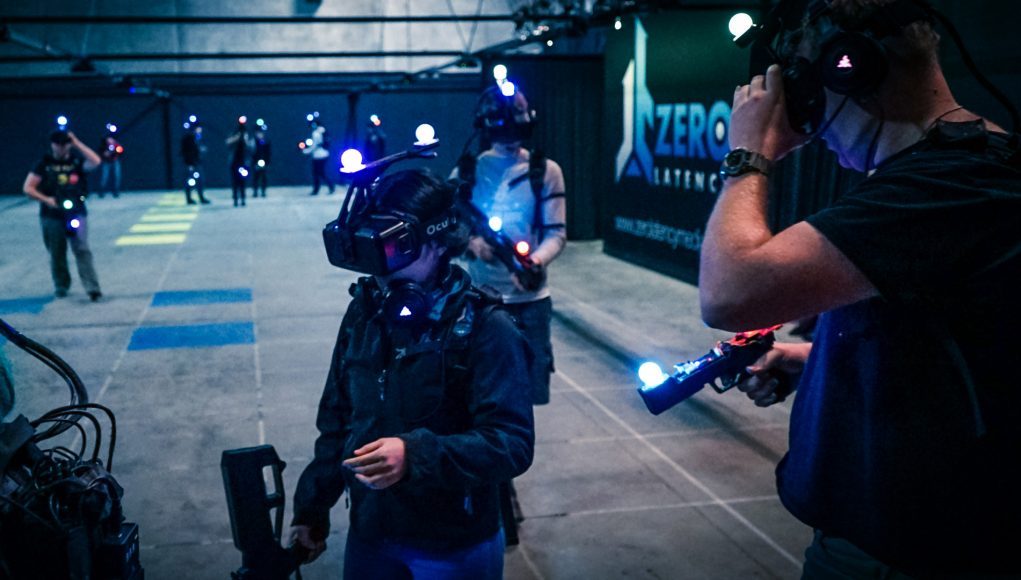Melbourne-based firm Zero Latency has raised $7 million in venture funding. The company specialises in out-of-home ‘warehouse scale’ local multiplayer VR experiences, and is beginning to open attractions around the world.
Consumer VR headsets are optimised for use in a small living space, and the vast majority of software is designed with these limitations in mind. But VR can benefit from much larger spaces, particularly when the experience involves multiple local participants and promotes energetic movement across a large space.
A natural fit for a larger space is a VR-enabled combat arena, much like a cutting-edge game of laser tag. Melbourne-based Zero Latency was one of the early enablers of ‘warehouse scale’ VR, utilising custom tracking systems for the headsets and gun accessory, combined with ‘backpack’ PCs to achieve a wireless solution that allows for large scale VR gameplay that goes beyond the sort of roomscale VR experiences available in the home.
Originally known as the Inversion Project back in 2013, Zero Latency has developed rapidly, thanks to a $1m investment from Sydney-based Carthona Capital in 2014, along with crowdfunding to bolster the initial 2-player co-op ‘zombie shooter’ public events. It has been fully operational as a public attraction in Melbourne for over a year, and now offers three modes (zombie survival, puzzle solving, and space shooter) and supports up to six players. The technology was recently brought to Tokyo, Madrid and Orlando, and uses Alienware backpack PCs designed in collaboration with Zero Latency.
A fully-untethered, custom VR experience, played with friends within a large arena is undoubtedly the future of the laser-tag style attraction, as the possibilities of a virtual environment are limitless. Companies like Zero Latency are expected to grow, and according to The Australian, a further $7 million in venture funding was backed by Thorney Investment Group, Contango Asset Management and Regal Funds Management, with original investors Carthona contributing $2.7 million of the latest round.









